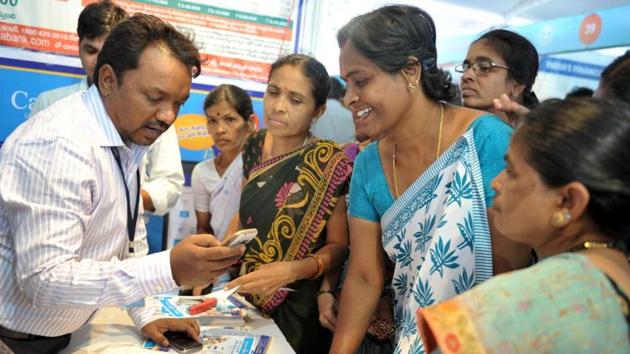Why India is in a sweet spot to be a revamped economy, writes Bibek Debroy
India will likely become an upper middle income country and cross the threshold of US $3,955 by around 2050.he timeline will be affected, but not the essential thrust.
There are now estimates of GDP of countries dating back thousands of years, up to 1 CE to be precise. The gap between India and the rest of the world (in terms of per-capita GDP) was smaller then. But even more remarkable was India’s total GDP as share of the world total. Size makes a difference and size adds clout and heft.

Forecasting the future is fraught with uncertainty – it depends on timeline (are we forecasting for 2022, 2030, or 2047, for instance? ), it depends on indicator (per capita GDP, aggregate GDP with official exchange rates, aggregate GDP with purchasing power parity exchange rates, rate of growth), and it depends on assumptions. But regardless, some trends regarding the Indian economy are as certain as certain can be.
The share of agriculture and allied activities in GDP will decline. Since this segment invariably grows slower than industry or services, there is an added contribution to GDP growth. A demographic shift is occurring, though India will age beyond 2035. Notwithstanding problems with education, skills and health, that is an increment to GDP growth. If young India has an entrepreneurial inclination, the argument is strengthened. Demographic transition and income growth increase the savings rate. Consequently, the investment rate increases and inflows of foreign capital reinforce this. Competition and infrastructure improvements reduce incremental capital/output ratio, a measure of efficiency of capital usage. With the same amount of capital, one gets greater output. Historically, several States have lagged behind. Because of this slack, they have catching up to do and it is simultaneously easier for them to grow faster. A basket of reasons makes public expenditure more efficient. To use a clichéd expression, India is in a sweet spot. Too often, one’s vision is myopic and one is inordinately fixated on the immediate. Whatever be the temporary lament, these medium-term arguments are robust. Implicitly, every argument made so far has been about national income, or per capita income, expressed in Indian rupees. However, when economies grow relatively faster than other economies, exchange rate appreciates, both in official exchange rate and purchasing power parity (PPP) terms.
This lists the main strands behind rosy projections. But precise timelines are contingent on assumptions made. When will India’s rate of growth overtake China’s rate of growth? In a matter of years. Today, India’s per capita GDP is US $1,850 and PPP per capita GDP is just over US $7,100. When will these overtake China’s? Not in the foreseeable future, there is too much of a gap. The World Bank classifies India as a lower middle income country. When will India become an upper middle income country and cross the threshold of US $3,955? Perhaps around 2050. But remember that point about size, aggregate GDP rather than per capita. If one is going to use PPP and if EU is not counted as a single entity, by 2025, India will be the third largest economy in the world, after China and the US. Somewhere between 2035 and 2040, India should overtake the US. By its very nature, PPP tilts the equation in favour of economies like India. If one isn’t using PPP, the timeline gets stretched a bit more. There are legitimate reasons why this century has been called an Asian one. Depending on the year, India will be a transformed society and economy. Cast your mind back to what it was like before 1991. When reforms were unleashed in 1991, how many people would have anticipated what has occurred since? Similarly, it is impossible to visualise today what India will be thirty years down the line, especially because technology makes it possible for an economy like India to leapfrog.
All this stuff about India’s rise is fine, but isn’t it reversible? Nothing about the future is ever certain. However, there is the impossible and there is the improbable. It is improbable there will be deviation from those strands in the argument. They are also relatively impervious to government-induced policy changes. At worst, the timeline will be affected, not the essential thrust. Stated thus, the rise is indeed irreversible. But all this is about the economy and related matters. Suffice to say, power now flows out of the barrel of the economic gun. Shouldn’t India have a greater role to play in governance structures of international organisations? As India’s economic prowess and heft grow, that will happen automatically, as a matter of course. That too is irreversible. 2047 will be a good year to benchmark India’s improvements, a hundred years after Independence. There are people who thought otherwise, at the time of Independence. But the idea of India has also been irreversible.
(Bibek Debroy is chairman of Economic Advisory Council to the Prime Minister and a member of Niti Aayog).





